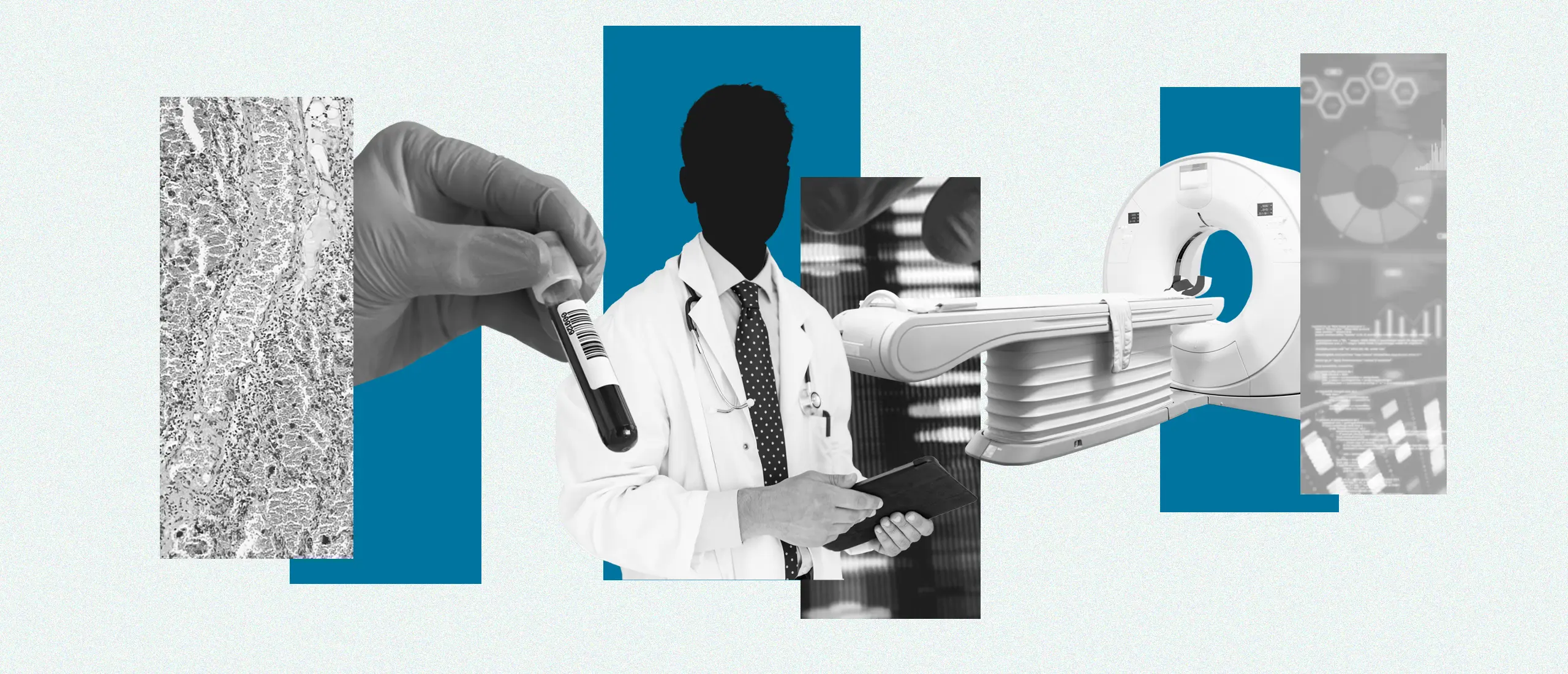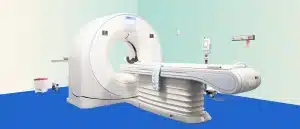How to Find a Medicine 3.0 Doctor Like Peter Attia
- By Jennifer Chesak
- Fact-checked by Lara Rosenbaum
- February 5, 2024
30-Second Takeaway:
- Medicine 3.0, a term coined by Peter Attia, M.D., is an emerging philosophy in medicine that shifts the model of care from a focus on disease treatment to prevention—with a longevity lens.
- Medicine 3.0 gets people to an optimal state using testing, technology, and focusing on root causes.
- To find a Medicine 3.0 doctor, consider longevity or functional medicine doctors who are accessible and easy to talk to, and who stay on top of the latest medical research and advancements.
There’s a good chance you’ve heard of Peter Attia, M.D, the longevity-focused doctor whose patient list includes Chris Hemsworth, Elon Musk, and Hugh Jackman. He’s also a New York Times best-selling author (Outlive: The Science & Art of Longevity), an everywhere podcast guest and podcaster himself (if you’re not listening to The Drive yet, what are you waiting for?).
At his roots, though, he’s a Stanford-trained physician who practices what he calls Medicine 3.0: a type of healthcare more focused on disease prevention than treatment. Here’s more on this longevity-oriented medicine, and why—and how—you might want to focus on it, too.
Before Medicine 3.0
Why does Attia focus on prevention-based medicine—and how does it relate to leading a longer and hopefully better life? It can be helpful to hit rewind and first understand medicine 1.0 and 2.0.
Medicine 1.0
Medicine 1.0 takes us back to the days when we didn’t use the scientific method. Science, and therefore medicine, lacked the process of observing, questioning, formulating hypotheses, testing with an experiment, and then using those results for further study.
Instead of using proven health interventions, doctors were bloodletting and covering people in leeches. Bloodletting sometimes ended disease, but often because it killed the patient. (1).
Medicine 2.0
Some say Medicine 2.0 came about in the 17th century, but Attia challenges that idea, saying we didn’t get Medicine 2.0 until later in the 19th century. That’s when we finally developed and understood germ theory, for example: the idea that pathogens can cause infectious disease. And through the centuries, we developed the scientific method and eventually randomized clinical trials (2).
Medicine 2.0 involves finding and treating diseases—like type 2 diabetes, Alzheimer’s, cancer, and heart disease (the conditions most likely to cause most of our deaths)—but only after you’ve already been diagnosed. There’s little focus on preventing disease and understanding its root causes.
Medicine 2.0 is also rife with medical gaslighting—when medical professionals discount or deny the occurrence of pain or other symptoms of patients. Medical gaslighting often occurs when a provider can’t find an immediate direct cause of symptoms, for example, or even sometimes because of power dynamics (3).
We don’t want to totally knock Medicine 2.0. You’ll be grateful for it if your appendix ruptures and you need surgery and antibiotics—stat. And it’s highly useful for when you break a bone during an overzealous mountain-biking adventure. But Medicine 2.0 doesn’t keep you from getting sick in the first place.
Medicine 3.0
Medicine 3.0 is about switching the focus from treatment to prevention. For this reason, Medicine 3.0 involves the study of longevity. It’s not a one-size-fits-all approach. Instead, it focuses on the individual and treats the body as a whole, rather than a collection of organs and systems.
Medicine 3.0, with its heavy focus on prevention, can be more empowering. The use of alternative tests and emerging (and existing) technology offer patients a glimpse at how seemingly unrelated symptoms are connected. This puts the power in the patient’s hands to take charge of their own health.
Plus, 3.0 doctors also prescribe lifestyle changes—such as boosting exercise levels, focusing on upping micronutrients, and more—which can also prove empowering.
Here’s the basic gist of Medicine 3.0, which is still emerging and evolving (2):
A focus on prevention
Attia says this focus involves “absurdly early preventative measures for chronic conditions.” What does that look like in practice? See the next point.
A transition from “normal” to optimal
Let’s say your doctor tests your fasting blood glucose. They determine that your result is in the normal range (meaning you don’t have prediabetes). Under Medicine 2.0, you wouldn’t be treated until your levels progressed to the point you developed type 2 diabetes—a trajectory that research suggests can be prevented (4).
A Medicine 3.0 doctor, however, will note that a normal level isn’t necessarily what’s optimal. If your fasting glucose is on the high end of normal and climbing, they might offer interventions like Metformin to keep things from progressing.
The use of technology, including wearables
Sticking with the glucose example, your doc might prescribe a continuous glucose monitor so that you can see how different foods and lifestyle habits affect your glucose levels (5). Other tech might include sleep trackers, activity trackers, and more.
A focus on root causes
Let’s say you’ve developed chronic acid reflux. A 2.0 doc will likely prescribe acid-reducing or acid-blocking medications. However, your 3.0 doctor might test what’s in your gut microbiome to see if that’s the potential cause (6). They might even test your gut microbiome for a condition like gastroesophageal reflux disease and its symptoms before they ever crop up.
A focus on systems
Medicine 2.0 treats diseases and risk factors as existing in a silo. For example, you see a psychologist for your mental health and a gastroenterologist for your constipation. These providers likely won’t ever interact with each other. The mental health professional might prescribe an antidepressant, while the gut doc might just diagnose you with irritable bowel syndrome.
Yet the gut and brain influence each other. Microbiome composition may relate to depression, for example (7). Medicine 3.0 looks at the body as a whole, with its interconnected systems all influencing each other.
A focus on longevity
Longevity aims to increase lifespan, which is the number of years you are alive. But it also aims to increase healthspan, the number of years you are in generally good health—so you can actually enjoy life in your final decades (8).
Researchers and doctors practicing Medicine 3.0 are aiming to understand the hallmarks of aging and how to mitigate them or slow the processes that lead to age-related diseases. So by its nature, longevity also focuses on disease prevention.
An individualized approach
Medicine 3.0, focuses on each individual patient. For example, you might be experiencing low testosterone for a different reason than your pickleball opponent. A 3.0 doctor will aim to figure out the specific factors affecting your hormone levels.
Medicine 3.0 also places a value on spending time with each patient, rather than turning the clinic into a revolving door. This individualized and patient-centered focus may help improve outcomes, focus on patients’ wishes, and prevent medical gaslighting (9).
An empowering approach
Medicine 2.0 lacks an empowering approach, simply because it diagnoses and treats diseases after they’re already present. Doctors also have had to sometimes act as gatekeepers to control costs (10). The ApoB test may be a better cholesterol marker than traditional tests, for example, though it’s not always covered by insurance (11). A 3.0 Medicine doc might try to get you the tests you need, rather than simply jump to prescribing a cholesterol-lowering statin.
How Can You Find a Doctor Like Peter Attia?
Even if he were taking new patients (he’s not) having Attia as a doctor is “not cheap,” according to the famed doc himself. You might not be loaded with cash, or maybe you live in rural…anywhere. So how do you find a doctor like Peter Attia—who focuses on Medicine 3.0 and all it entails?
There are some healthful and preventive steps you can take that don’t even require a doctor. For example, you can boost your activity level, cut out ultra-processed foods, and get eight hours of sleep all on your own.
However, if you’re seeking a 3.0 doc to test as many biomarkers as possible and tailor prevention specifically to you, you’ve got a few options. Searching for Medicine 3.0 doctors likely won’t net you many results (Attia himself is working on compiling a directory). In the meantime, you can find a 3.0 doc by looking at physicians who essentially practice 3.0—but just don’t call it that yet.
Here are some questions to consider when selecting a doctor, which Attia relays in his book, Outlive:
- Advocacy: Will your doctor connect you with specialists or help you navigate the health system?
- Affability: Will they have open dialogue with you and emphasize the human side of medicine?
- Availability: Can you easily book an appointment?
- Ability: Does your doctor stay up on the latest medical research and advancements?
Additional Medicine 3.0 Steps You Can Take:
1. Find a longevity doctor
At the core of Medicine 3.0 is the study of longevity. You can search for longevity specialists in your area to help narrow in on your ideal doc.
2. Or functional medicine doctor.
Functional medicine practitioners also focus on the individual, foundational causes of diseases, and disease prevention. In a sense, they’re already practicing some Medicine 3.0 tenets.
3. Sign up for a concierge medicine service
Concierge medicine involves a subscription model. Think of it as having a doctor on retainer—which can allow for more dialogue and accessibility. Concierge medicine also typically takes a more individualized approach than does the traditional primary care model of medicine. Note: This can sometimes be pricey, with doctors charging fees.
4. Try at-home lab tests
While it’s possible to order many tests online, platforms like Hone Health also offer a consultation to help you navigate the at-home tests to best help serve your needs.
References
1. Colovic N, Lekovic D, and Gotic M. (2016). Treatment by bloodletting in the past and present.
2. Attia P, et al. (2022). #231 – AMA #41: Medicine 3.0, developments in the field of aging, healthy habits in times of stress, and more.
3. Fraser, Sarah., (2021)., The Toxic Power Dynamics of Gaslighting in Medicine.
4. Lawal Y, Bello F, and Kaoje YS, et al. (2020). Prediabetes deserves more attention: A review.
5. Holzer R, Block W, and Brinkmann C, et al. (2022). Continuous glucose monitoring in healthy adults—possible applications in health care, wellness, and sports.
6. Sugihartono T, et al. (2022). Analysis of gastric microbiota and Helicobacter pylori infection in gastroesophageal reflux disease.
7. Jäbrink-Sehgal E and Andreasson A. (2020). The gut microbiota and mental health in adults.
8. Germany A, Yamada S, and Terzec A. (2021). Longevity leap: mind the healthspan gap.
9. Ahmed S, et al. (2019). A qualitative study on measuring patient-centered care: Perspectives from clinician-scientists and quality improvement experts.
10. Ferris T, et al. (2001). Leaving gatekeeping behind — Effects of opening access to specialists for adults in a health maintenance organization.
11. Proitsi (2021). The key role of apolipoprotein B in major vascular diseases and longevity.














